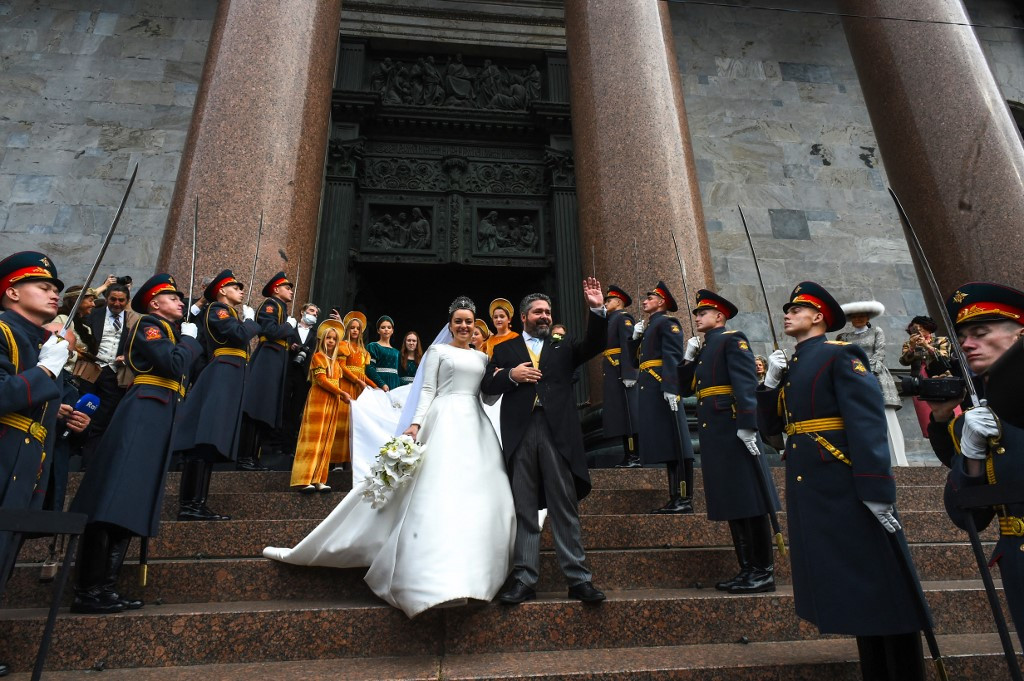On November 11, 1967, a significant event took place in the world of royal weddings: Princess Marina Romanov, a descendant of the Russian imperial family, married William Beadleston, an art dealer from New York. This union brought together two individuals from different backgrounds, each with their own unique heritage and experiences.
Princess Marina Romanov, born on May 22, 1940, in San Francisco, was the only child of Prince Vassili Alexandrovich of Russia and Princess Natalia Alexandrovna Galitzine. Her father was the youngest child of Grand Duke Alexander Mikhailovich of Russia and Grand Duchess Xenia Alexandrovna of Russia. Marina's family history was marked by its connection to the Russian imperial family, making her a significant figure in the world of royal weddings. Her marriage to William Beadleston marked a new chapter in her life, blending her royal heritage with her new husband's artistic background.
what were the key elements that made Princess Marina Romanov's wedding unique

what was the significance of the dual religious ceremony at Princess Marina Romanov's wedding

why was it important to have both an Anglican and a Greek Orthodox ceremony
 |
| Grand Duchess Xenia with her granddaughter Princess Marina. |
Born on 22 May 1940 at San Francisco, Princess Marina Romanov was the only child of Prince Vassili Alexandrovich of Russia (1907-1989) and Princess Natalia Alexandrovna Galitzine (1907-1989), who married in 1931. Vassili was the youngest child of Grand Duke Alexander Mikhailovich of Russia and Grand Duchess Xenia Alexandrovna of Russia. Natalia was the daughter of Prince Alexander Vladimirovich Galitzine and Lubov Vladimirovna Glebov. Princess Marina Romanov attended Crystal Springs School and Sarah Lawrence College. She received her teaching credentials from Bank Street College of Education in New York.
Born on 31 July 1938 at Long Branch, New Jersey, William "Bill" Lawrence Beadleston was the son of Alfred Nash Beadleston (1912-2000), the President of the New Jersey Senate and Mayor of Shrewsbury, and Sylvia Lawrence White (b.1915), who married in 1935. William Beadleston attended the University of Paris and graduated from Yale in 1960. He was an art dealer at Acquavella Galleries in New York.
After their marriage, Bill and Marina planned to live in New York City.
 |
| Marina Romanov |
what were the main themes of Princess Marina Romanov's wedding
As we conclude our exploration of Princess Marina Romanov's wedding to William Beadleston in 1967, it is essential to acknowledge the significance of this event in the context of Romanov royal weddings. This union marked a unique blend of royal heritage and cultural exchange, reflecting the evolving nature of the Romanov dynasty. The dual religious ceremony, which included both an Anglican and a Greek Orthodox service, symbolized the fusion of their two traditions and the commitment to their shared future. This blend of cultural practices underscores the couple's desire to honor their respective backgrounds while building a new life together. The Romanov family's history is marked by its connection to the Russian imperial family, making Princess Marina's marriage a significant event in the world of royal weddings.
Princess Marina Romanov's wedding serves as a testament to the enduring legacy of the Romanov dynasty. The Romanov family's history is characterized by its rich cultural heritage and its connection to the Russian imperial family. This legacy continues to shape the lives of its descendants, including Princess Marina, who married William Beadleston in 1967. The couple's union marked a significant event in the world of royal weddings, reflecting the evolving nature of the Romanov dynasty. The Romanov family's history is marked by its connection to the Russian imperial family, making Princess Marina's marriage a significant event in the world of royal weddings. As we reflect on this event, we are reminded of the enduring power of cultural exchange and the importance of honoring one's heritage. The Romanov family's legacy continues to inspire and captivate audiences worldwide, and Princess Marina's wedding remains an integral part of this rich cultural heritage.
what other notable Romanov weddings have taken place
- Grand Duke George Mikhailovich Romanov and Rebecca Virginia Bettarini (2021): This wedding marked the first royal wedding to take place in Russia in over a century. It was held at Saint Isaac's Cathedral in St. Petersburg and featured a Russian Orthodox ceremony. The couple, who had been married in a civil ceremony earlier, exchanged vows in the presence of several hundred guests, including members of European nobility and Russian officials.
- Prince Andrei Alexandrovich of Russia and Elisabetta di Sasso Ruffo (1918): This wedding took place during the Russian Revolution and was one of the last royal weddings before the Romanov dynasty was overthrown.
- Prince Dimitri Romanov and Countess Dorrit Reventlow (1993): This wedding occurred in Kostroma, Russia, and marked a significant event in the Romanov family's history after the fall of the Soviet Union.

No comments:
Post a Comment